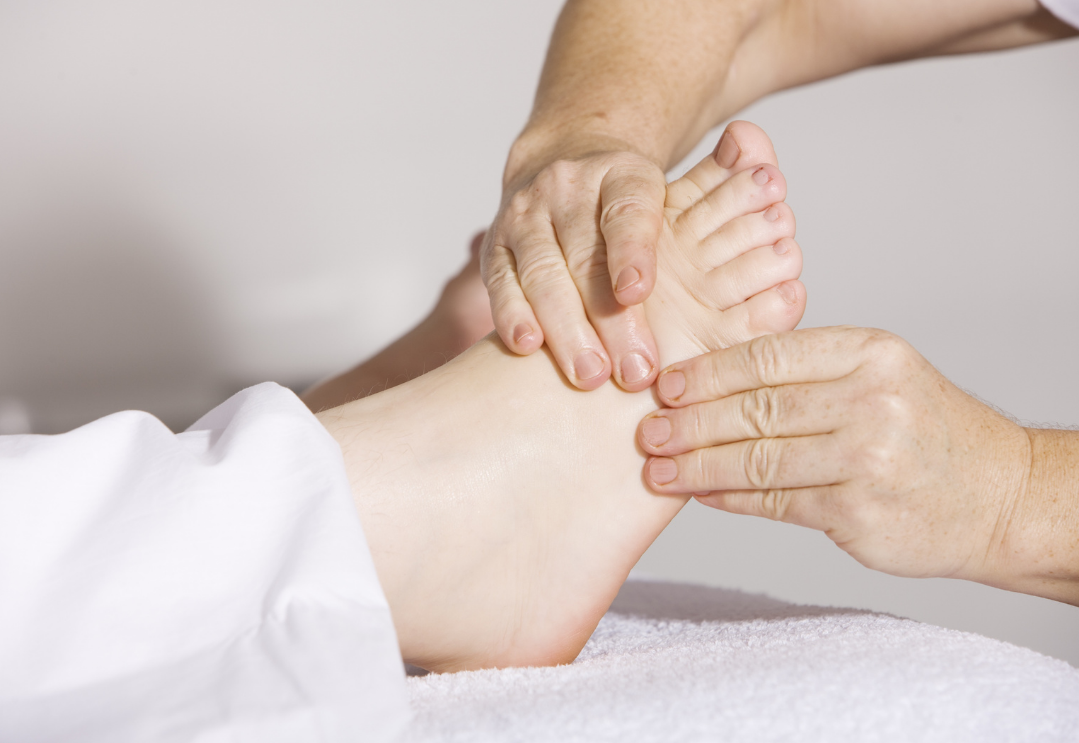Each of our foot is made up of over 100 different muscles, tendons and ligaments which work together to balance, support and keep us moving forward in our everyday activities. The complexity of the foot often makes it difficult for us to find the reason of our pain. So, let’s take a look at the most common foot issues associated around the ball of the foot.
1. Plantar Heel Pain (Plantar Fasciitis):
This is possibly the most common bottom of the foot injury we see in our clinics. Our foot has a long plantar fascia (connective tissue) which runs from the heels to the toes. The fascia contracts and stretches which provides balance and strength when you walk. However, when it is overloaded (e.g. walking or prolonged standing), this thick band can be irritated that leads to heel pain. It is often characterized by a painful first step in the morning when you get out of bed. Symptoms can take weeks to several months to heal depending on the circumstances of the individual. Physiotherapy can help identify the factors that could be causing the heel pain and relieve the pain associated with plantar fasciitis.
2. Mortons Neuroma (Intermetatarsal Neuroma)
Mortons Neuroma occurs when there is a compression or irritation between the 3rd and 4th digits of the toes. People with this condition often report a burning or tingling sensation in their foot. There is a large range of causes that can lead to a thickening of this nerve tissue. For example, prolonged use of high heels or tapered shoes forces the toes in an unnatural position which can lead to this issue. Other causes can stem from repetitive irritation to the nerve from sports that involve a lot of running. Physiotherapy treatment involves exercises to increase joint space and strengthen the intrinsic muscles that support the foot.
3. Stress fracture:
These types of fractures are caused by repetitive load to the bone. Did you know that up to 20% of all sports injuries presented in clinics are bone stress related injuries? The most common stress fracture we see under the heel of the foot is a sesamoid stress fracture. It is located under the big toe and this bone assist the big toe during walking and running activities. Remember that both biomechanical (e.g. running form, footwear, surface) and biological factors (bone health, energy and medical history) can influence an individual’s vulnerability to sustain a bone stress injury. This is where physiotherapy can help. Treatment can involve activity modification to allow the foot to heal and exercises to help strengthen the muscles and support the foot.
Diagnosis and early treatment are essential for optimal outcome for your foot pain. If you are someone who experience heel pain, we can help! Book an appointment with one of our physiotherapist today with one of our friendly and qualified physiotherapists today to get an individualized assessment and treatment of your foot pain. Give us a follow on Instagram for physiotherapy tips on exercises that can help settle that heel pain.
References:
Pegrum, J., Crisp, T. and Padhiar, N., 2012. Diagnosis and management of bone stress injuries of the lower limb in athletes. Bmj, 344.

